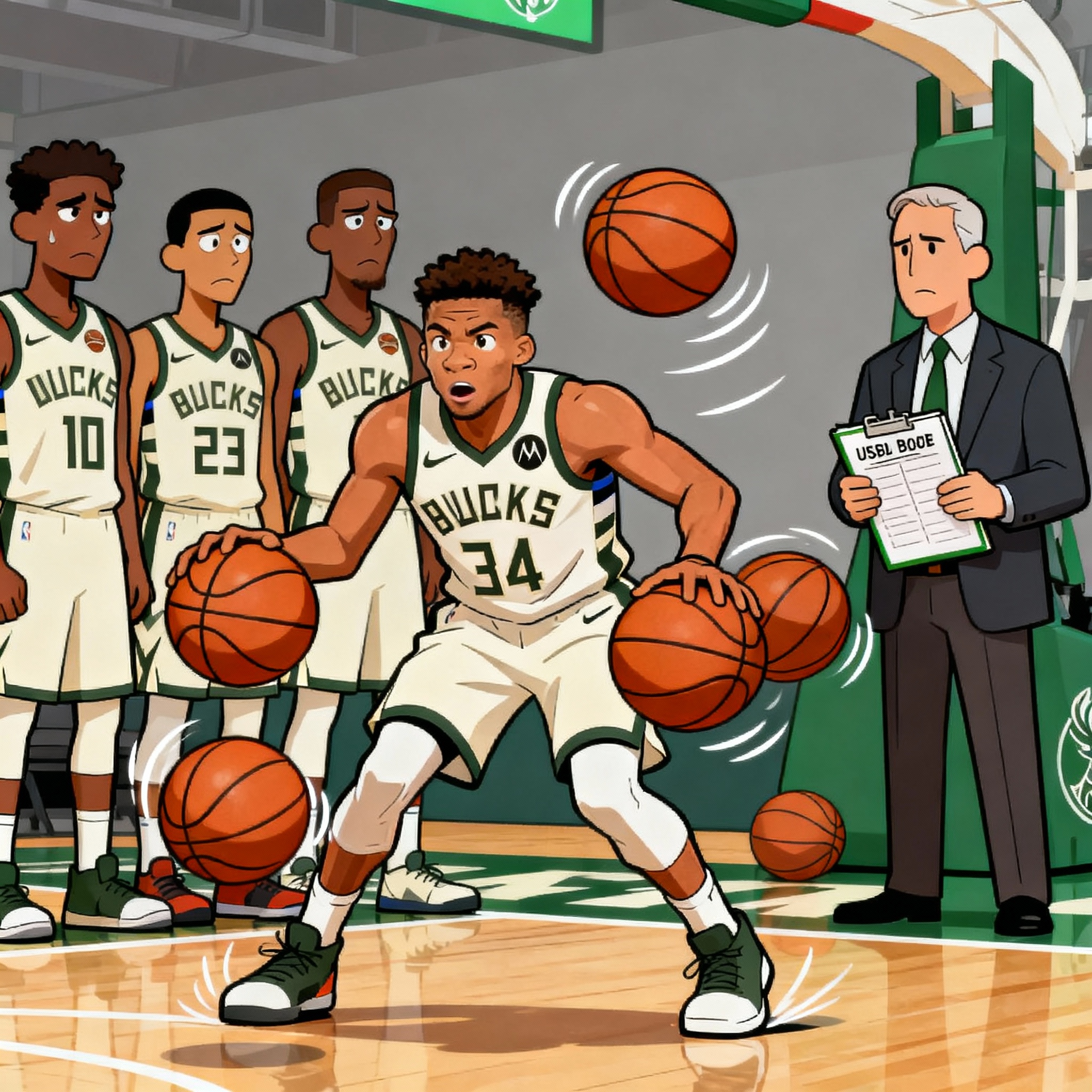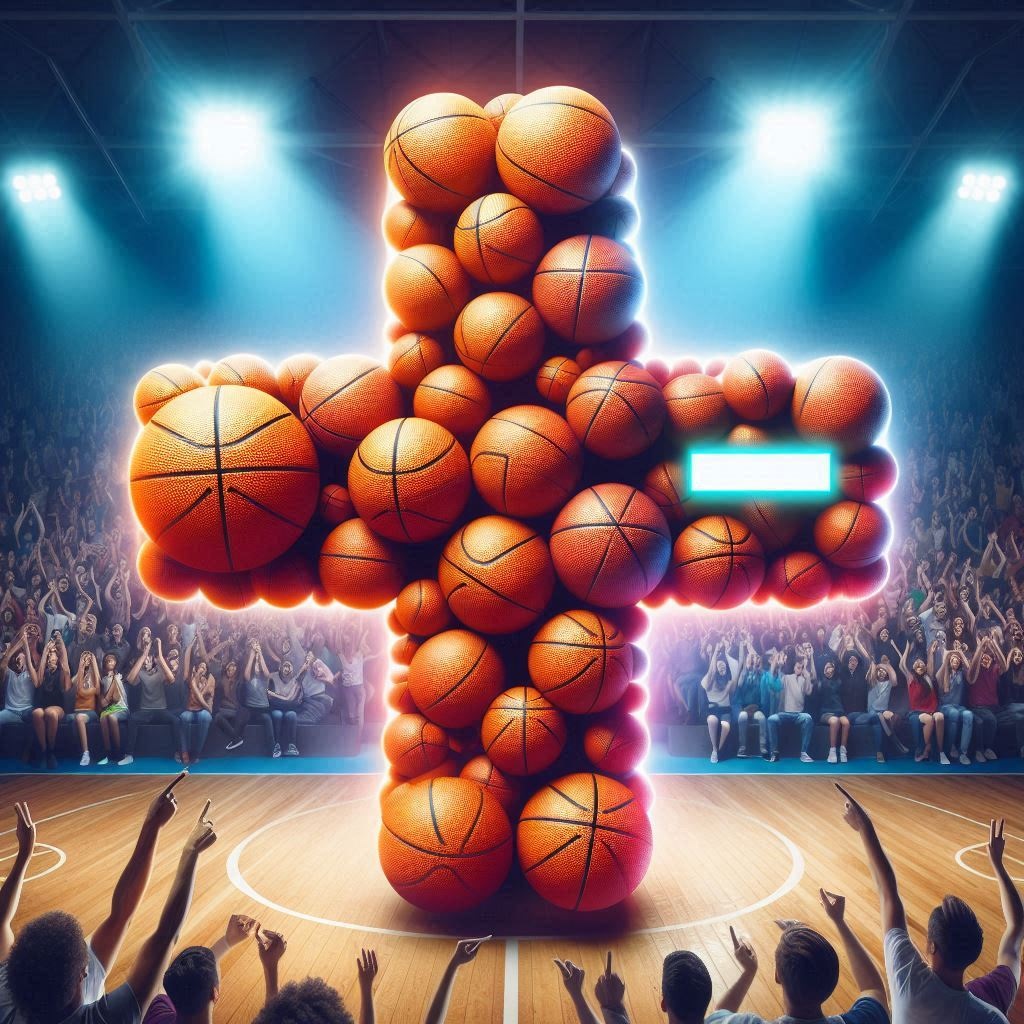
So you have seen this chart before. It shows that Giannis, despite not being much good at dribbling, held the ball more than anyone. Despite his tendency for turnovers, he insists on bringing the ball down and then wasting time holding it.
Some say this is on purpose. For sure it helps boost his stats. Opponents shoot. Everyone on the Bucks team clears out for Giannis to boost his rebound stats. Then Giannis brings down the ball looking for an easy dunk. He often gets locked up and then wastes more time because he has no skills to disentangle himself. When he does pass it is often too late to team mates that are covered defensively. Still, when we link the amount of time Bucks’ players had the ball to their points, this is the chart:

Amazingly Giannis is 8th. Makes sense. Because even when he gets fouled, he converts free throws terribly. KPJ makes the most of what little time with the ball he is given.
Giannis’ tendency to dominate the ball for the Milwaukee Bucks has sparked considerable debate and criticism, especially as his usage rate continues to rise each season. In the 2024-25 season, Giannis’s usage reached league-leading levels, with nearly 35% of the Bucks’ possessions ending with his actions, and this figure spiked even higher during periods when Damian Lillard was absent.
Downsides of Giannis’s Ball Dominance
- Ball-stopping and predictability: When so many possessions flow through Giannis, opposing defenses can focus on collapsing the paint and crowding him, making the Bucks’ offense more predictable and easier to scheme against in crucial playoff moments. This “heliocentric” approach often slows ball movement and reduces chances for teammates to find rhythm and confidence in key stretches.
- Under-utilization of teammates: Despite talents like Lillard or Middleton, the offense has repeatedly struggled to maximize their skill sets because so many plays still funnel directly through Giannis. This creates a scenario where valuable offensive players become spot-up shooters or afterthoughts, rather than being integrated as dynamic threats. New players simply don’t touch the ball enough.
- Sustainability and fatigue: The enormous responsibility placed on Giannis not only makes the Bucks vulnerable if he struggles or faces fatigue, but also risks injury or long-term wear as he is now in his 30s. Relying on one player to generate most of the offense makes the team less resilient in playoff series or against elite defenses.
Evidence of Problems
- Usage rate trends: Giannis consistently leads the league or nears the top in usage rate, a classic trait of ball-dominant systems that have mixed playoff success. In clutch moments, the offense tends to stall or force Giannis into heavily contested shots, resulting in lower efficiency or turnovers.
- Playoff disappointments: Playoff exits in recent seasons have frequently included criticism of the Bucks’ inability to adapt offensively when Giannis is neutralized. Ball dominance discourages other creators from developing confidence, shown in stagnant offense late in games.
- Calls for diversified offense: Analysts, coaches, and even teammates have advocated for more diverse offensive sets by reducing Giannis’s workload and sharing playmaking responsibility, recognizing that a more balanced approach is essential to success at the highest levels of competition.
The narrative that Giannis “hogs” the ball is backed by the data and on-court impact: while the Bucks remain extremely reliant on his talents, this overreliance has financial and competitive costs, especially in the playoffs. For Milwaukee to reach its full potential, a clear shift toward more collaborative, multi-faceted offensive schemes is urgently needed.
What have we seen so far? Well the Bucks coaching team saw how Spanoulis used Giannis in the Olympics. But they can’t copy it. Why? Because Giannis has become hooked on getting his stat padding in every game and refuses to share the ball even now. If the Bucks’ marketing team was honest, this is what the graphic would look like after a game:





